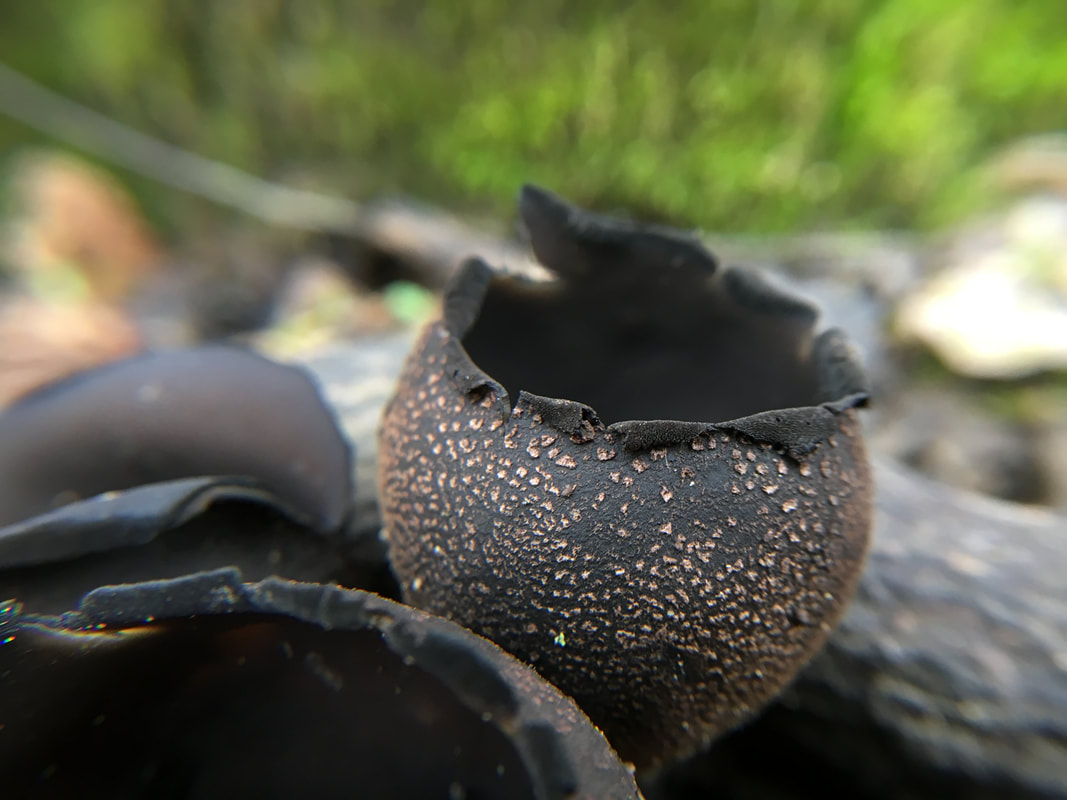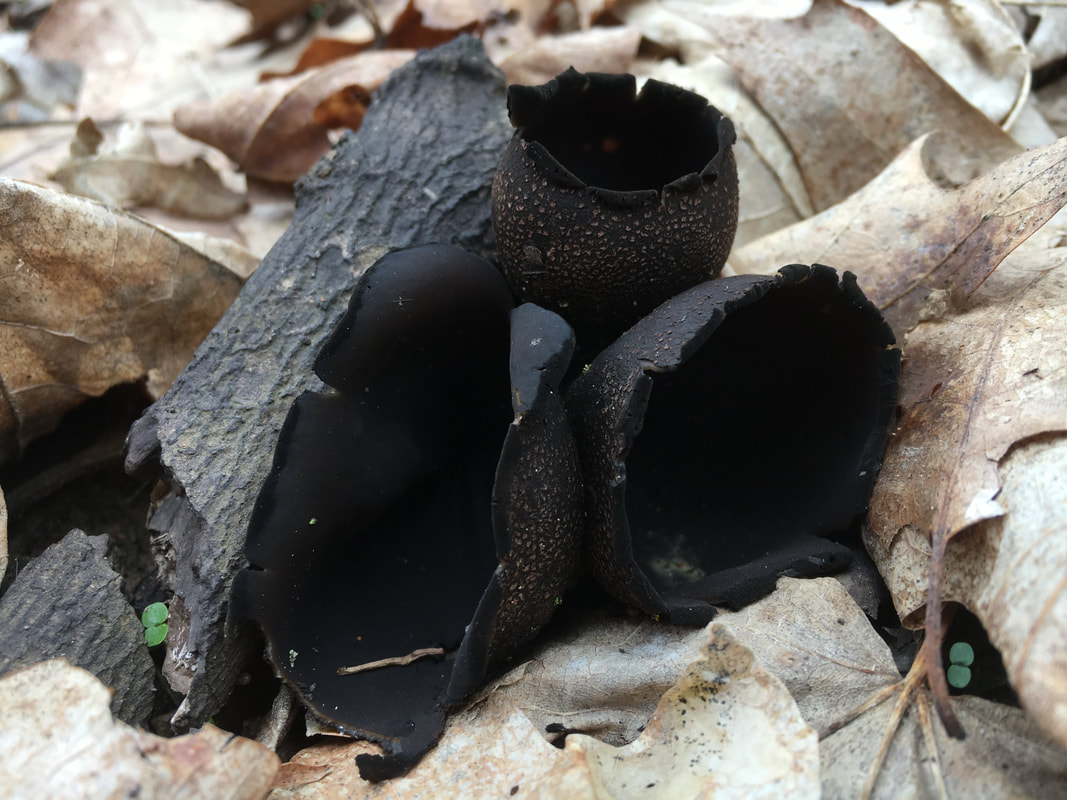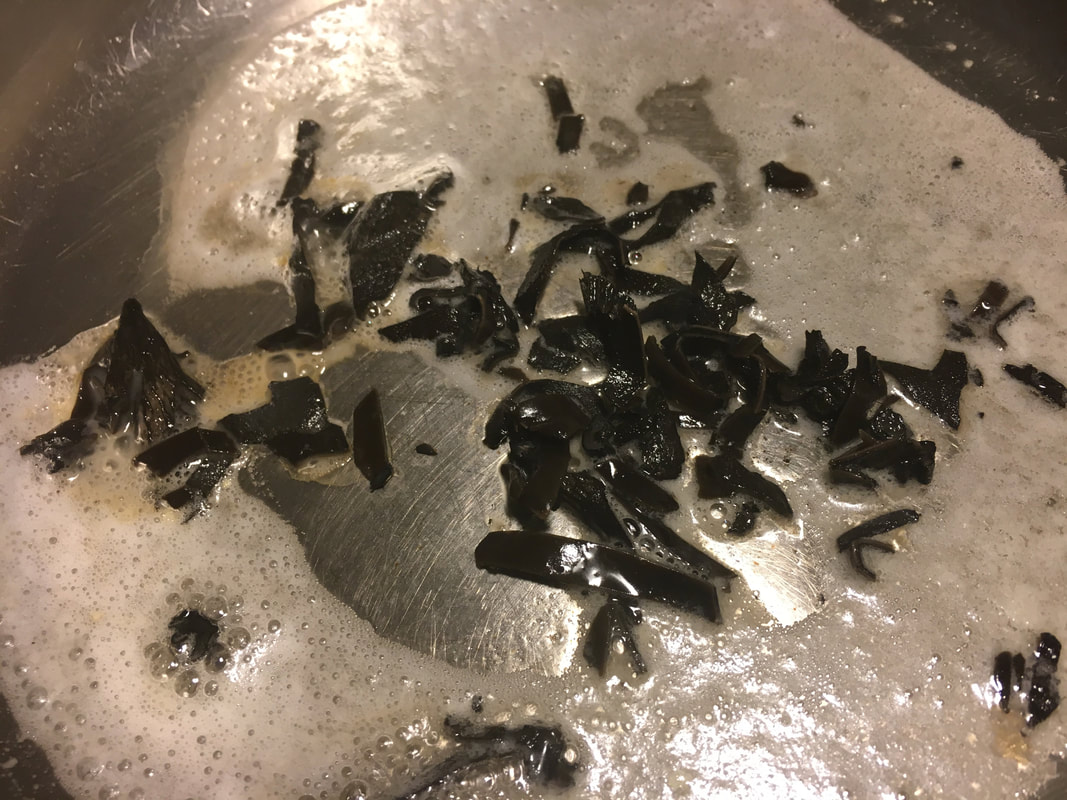|
Mycobank Taxonomy: Fungi, Dikarya, Ascomycota, Pezizomycotina, Pezizomycetes, Pezizales, Sarcosomataceae, Urnula Finding devil's urn wasn't a problem until I was hunting for it. In the past I would stumble across large flushes of this mushroom and be intrigued by its bizarre look, but honestly I never considered eating it. Then I read about it in Michael Kuo's 100 Edible Mushrooms and was on the hunt. Suddenly, it wasn't so easy to find. But I also can't say I hunted hard or with much enthusiasm. Michael Kuo writes: "The devil's urn is not a tantalizing tidbit for your taste buds.... to be honest, I doubt you're going to try the devil's urn more than once." When I found a few of them, I grabbed the ones that weren't full of springtails (I wish I had a photo of them; I thought the mushroom was sending out a cloud of spores before I realized they were arthropods springing forth). I did appreciate the scaly exterior, which was reminiscent of gold flakes on a chocolate cake. Back at home, I sloppily chopped them up and tossed them in a pan with some butter, cooked out their juices until I figured they had crisped a bit, and drizzled some salt on top. I think I took my first bite with a scowl and a humph, expecting them to be truly unpleasant. My face eased a bit as I chewed more and more - they were kind of chewy, in a satisfying way. The flavor was never gross. They were not bad, good even! Was I a "devil's devotee," in the language of Kuo? I turned out and the mushroom was already gone. My collection had been reduced to a spoonful, half of which was lost on me as I doubted its potential. So went my first experience eating devil's urn. This is a fascinating fungus and one that could have good eating potential. I'll definitely give it another shot. Urnula craterium is a parasite and saprotroph of oaks in eastern North America, fruiting before and during morel season. It could be a good conciliatory prize if morels are not found - or maybe even a delicious companion. SpecimenACD0140, Mushroom Observer #365843, 2 May 2019; Dane Co., WI, USA; leg. Alden C. Dirks, det. Alden C. Dirks, GenBank #MZ919152 (ITS rDNA), MICH 352153. ReferencesKuo, M. (2007). 100 Edible Mushrooms. The University of Michigan Press. Online Resources
0 Comments
Your comment will be posted after it is approved.
Leave a Reply. |
PermalinksProject Introduction Top EdiblesHericium coralloides
Laetiporus sulphureus Morchella americana Polyporus umbellatus Suillus ampliporus Archives
April 2023
Categories |
|
|
Terms of Use, Liability Waiver, and Licensing
The material on aldendirks.com is presented for general informational and educational purposes only, and under no circumstances is to be considered a substitute for identification of an actual biological specimen by a person qualified to make that judgment. Some fungi are poisonous; please be cautious. All images on this website are licensed under Attribution-NonCommercial-NoDerivatives 4.0 International (CC BY-NC-ND 4.0). |



 RSS Feed
RSS Feed




